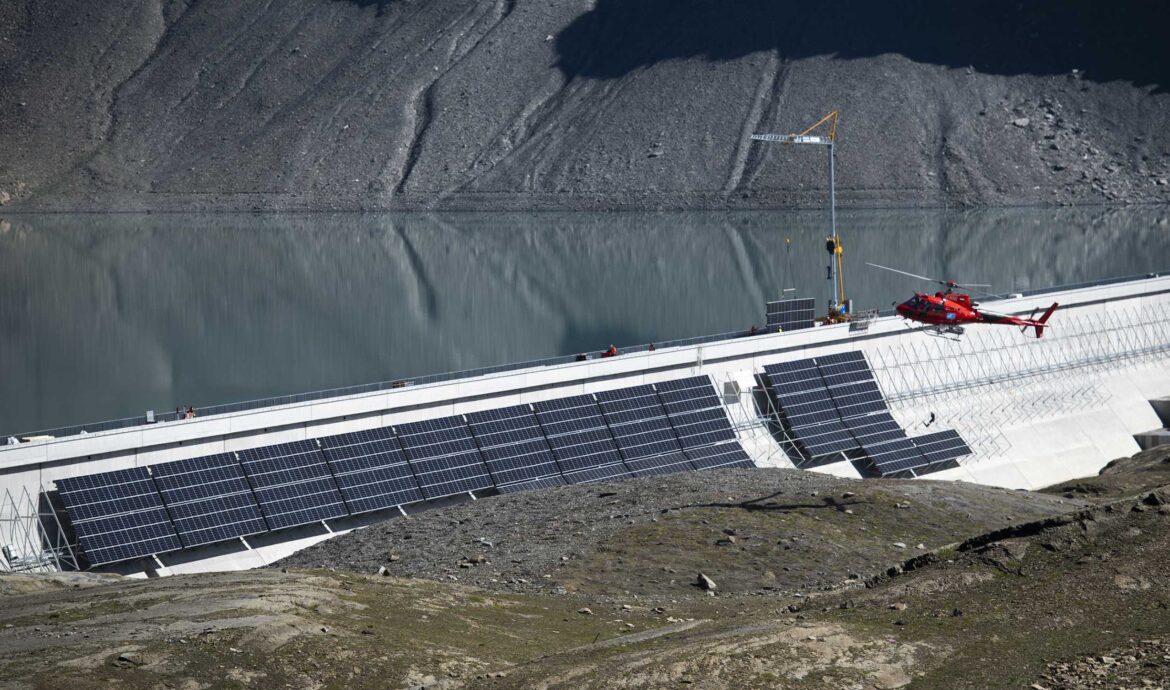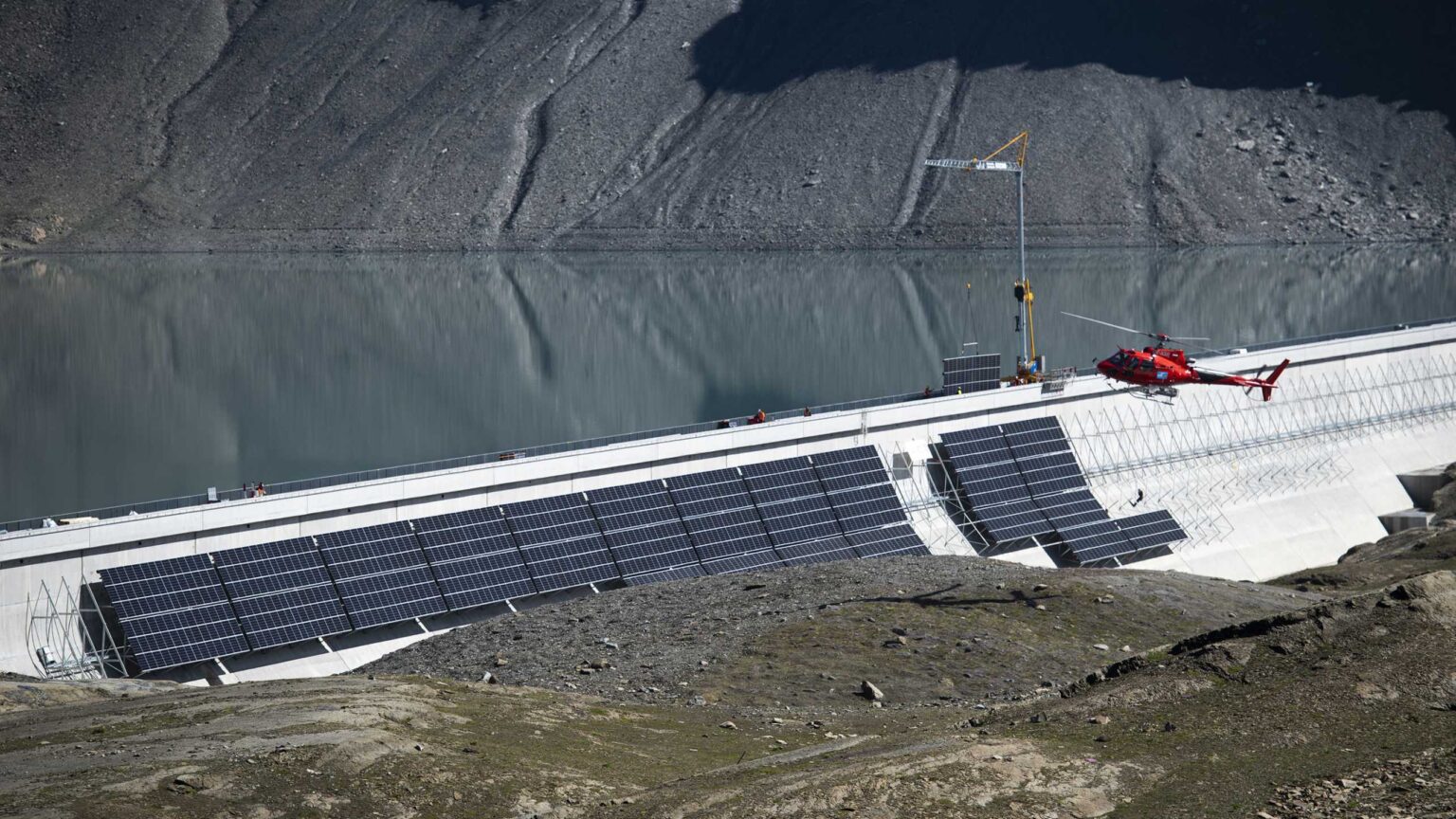
Can Switzerland transition to a secure renewables-based energy system? Absolutely!
On 08.06.2023 by Christian Schaffner, Gabriela HugBy Gabriela Hug and Christian Schaffner


Gabriela Hug is a professor at the Power Systems Laboratory and Chair of the Managing Board of the Energy Science Center (ESC) at ETH Zurich.
Christian Schaffner is the Executive Director of the Energy Science Center (ESC) of ETH Zurich in Switzerland. The ESC is an inter-disciplinary competence centre to promote energy research and teaching at ETH.
This opinion piece was first published in the Neue Zürcher Zeitung (NZZ) newspaper on 6 June 2023 and then cross-posted from the Zukunftsblog (available both in German and in English).
Gabriela Hug – an expert in power transmission networks – argues that securing an affordable energy supply from renewable sources is not a utopian ideal for Switzerland, but rather a practical and feasible necessity.
To curb the damaging effects of anthropogenic global warming, we need to reduce emissions of climate-altering gases as quickly as possible and offset unavoidable greenhouse gases with negative-emissions technologies. Based on the scientific consensus, the Swiss government has committed to reduce its greenhouse-gas emissions to net zero by 2050 in line with the Paris Agreement.1
By far the biggest source of these emissions in Switzerland is the burning of oil and natural gas in buildings and the use of petrol and diesel in transport. This is therefore where we should be focusing our efforts. We already have tried-and-tested solutions in both these areas, notably replacing fossil-fuel heating systems with heat pumps and heating networks and electrifying transport wherever possible.

Alpine PV – ideally combined with existing infrastructure – could play a major role in Switzerland’s energy transition. This photo shows the construction of the AlpinSolar power plant on the Muttsee dam in Linthal in August 2021.
The big question is whether it is technically and financially feasible to implement these measures in such a way that we end up with a sustainable, reliable and affordable energy supply by 2050. To help answer this question, 15 energy experts from ETH Zurich joined forces to analyse the security of Switzerland’s energy supply in a net-zero future based on current scientific research.
Doable, but challenging
The conclusion of our report is clear: transforming Switzerland’s energy system to reach net zero is technically feasible and can be achieved at a reasonable cost (possibly even with cost savings according to some calculations) provided that Switzerland rapidly expands renewable electricity generation and maintains the ability to efficiently trade power with the EU.2 The electrification of heating and transport can and must take place in parallel to the expansion of renewable energy sources.
Nevertheless, implementing this strategy will not be easy: electricity consumption will increase significantly over time due to the electrification of the building and transport sectors, with demand expected to rise from the current level of 60 TWh to at least 80 TWh. At the same time, however, efficiency gains will lead to a large drop in total energy demand. One of the key benefits of this will be a decline in Switzerland’s dependence on fossil-fuel imports.
‘It’s important to remember that even if Switzerland’s energy system remained unchanged, considerable investment would still be needed over the decades ahead.’
Another challenge is how to replace the power generated by Switzerland’s current nuclear power plants, though one purely practical solution to this dilemma would be to extend their operating life. What’s clear, though, is that we need to make large investments in domestic electricity production, in particular by installing PV systems on buildings and, ideally, in the Alpine region and, where feasible, by expanding hydropower. Additional wind capacity would also be helpful, especially in the winter months when wind farms are more productive than in summer. It’s important to remember that even if Switzerland’s energy system remained unchanged, considerable investment would still be needed over the decades ahead.
One of the biggest benefits of electricity trade is the ability to leverage synergies: Europe is installing large numbers of wind turbines, which generate more power in winter months, while Switzerland has significant hydropower and photovoltaic capacities that produce large amounts of power in the summer. The availability of production and usage data will play a major role in enabling smart grid solutions and promoting grid stabilisation.
Energy trade remains crucial
Switzerland’s task now is to make practical compromises when it comes to conserving landscapes and biodiversity: we don’t need to put solar panels on every rooftop and wind turbines in every available location, but there does need to be an increase in capacity, ideally guided by social considerations and based on our experience with pilot plants. Reducing final-use energy consumption is also an important and sensible goal, whether this is achieved through better insulation and smarter energy use in buildings or through more efficient transport management and more sustainable forms of mobility. Politics and society must discuss these options to ensure that whatever solutions are decided upon are quickly put into practice.
Some challenges still lie ahead. For example, electrification is not feasible in certain applications such as long-haul heavy-duty transport and air travel, where synthetic fuels are likely to be necessary. Switzerland will probably have to import most of these fuels in the future.
In addition, seasonal discrepancies in electricity production will need to be addressed and balanced. This will be made possible by seasonal storage, whether in the form of hydro, heat (such as the external page anergy grid on the Hönggerberg campus, which is already in operation) or using chemical energy carriers such as hydrogen and bio-methane, as well as through efficient electricity trade with neighbouring countries. This was also the case in previous decades.
Embracing change
Switzerland has everything it needs to make the transition to a sustainable, secure and affordable energy supply, including advanced infrastructure, capital resources, world-leading universities and traditional craftsmanship. Ultimately, what is required now is the social and political will to make this transition happen.
Although the resources of the various countries differ, the challenges we face are often similar worldwide. Switzerland has a unique opportunity not only to use its innovative strength for the energy transition in its country, but also to export technologies, expertise and experience to Europe and the world in the future.
Cover image: (Photograph: Keystone)
Keep up with the Energy Blog @ ETH Zurich on Twitter @eth_energy_blog.
Suggested citation: By Hug Gabriela, Shaffner Christian. “Can Switzerland transition to a secure renewables-based energy system? Absolutely!”, Energy Blog @ ETH Zurich, ETH Zurich, June 06th, 2023, https://blogt.ethz.ch/energy/secure-renewable-switzerland/
If you are part of ETH Zurich, we invite you to contribute with your findings and your opinions to make this space a dynamic and relevant outlet for energy insights and debates. Find out how you can contribute and contact the editorial team here to pitch an article idea!
